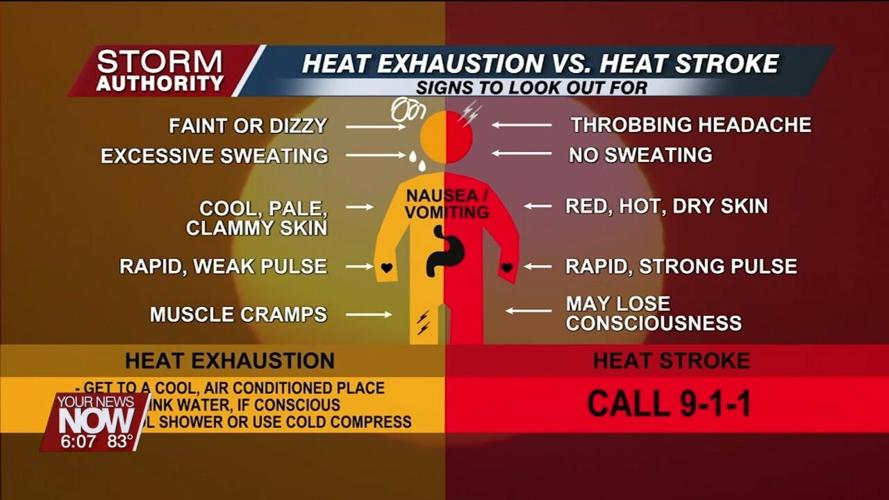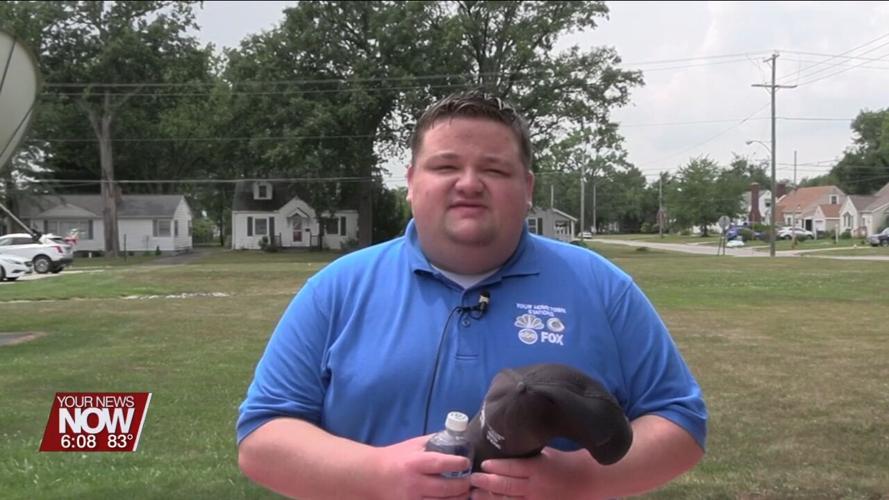
LIMA, OH (WLIO) - With excessive heat on the way, there are some potentially deadly hazards one could experience should their body overheat. Our Meteorologist Conner Prince talks us through how to keep everyone safe.

We haven't had much of it yet this summer, but our first excessive heat event is on its way later this week with the heat index possibly hitting the triple-digit mark. Before the heat arrives, let's head inside the studio to discuss some possible lifesaving measures that you need to know.

A major concern in excessive heat is accidentally leaving children or pets unattended inside a hot car. Without running air conditioning, a car can essentially turn into a deadly oven in a matter of minutes.
Let's look at just how hot a car can get and increase the outside temperature to 90 degrees, which will likely occur later this week, if not even hotter. In 10 minutes, the temperature inside the car is already dangerous at 109 degrees. By 30 minutes, that temperature climbs to 124 degrees, and in 60 minutes, an absolutely dangerous temperature of 133 degrees will occur. Therefore, before you lock that car, ask yourself: did I check the back seat to make sure that all children and pets are accounted for?
Now, let's discuss the similarities and differences in symptoms between heat exhaustion and heat stroke.
First, heat exhaustion normally consists of fainting or dizziness while heat stroke typically brings a painful, throbbing headache. Second, large or excessive amounts of sweat is correlated with heat exhaustion while no sweat production is tied with heat stroke. Third, one with heat exhaustion can find themselves with cool, pale, clammy skin while one with heat stroke can experience red, hot, dry skin. Fourth, both heat exhaustion and heat stroke can present themselves with nausea and vomiting. Fifth, while both heat exhaustion and heat stroke can have rapid pulses, a weak pulse is common with heat exhaustion while a strong pulse is found with heat stroke. Finally, heat exhaustion can inflict muscle cramps while those with heat stroke may completely lose consciousness.
What do you do if you suspect someone has heat exhaustion? First, find a cool place with working air conditioning. Then, have them drink water if they are still conscious. Finally, have them take a cool shower or place cold compresses on their body to help lower their body temperature.
If you suspect someone is suffering from a heat stroke, this is a medical emergency that could prove deadly if untreated. Call 9-1-1 immediately for emergency medical treatment.
Now if you have to go outside during these sweltering temperatures, there are ways that you can stay safe. First, always have a bottle of water with you to make sure that you keep replenishing your hydration throughout the day and always wear lightweight clothing, including hats as they do provide a little bit of shade from those intense sun rays... But if you can, stay inside with the air conditioning.













